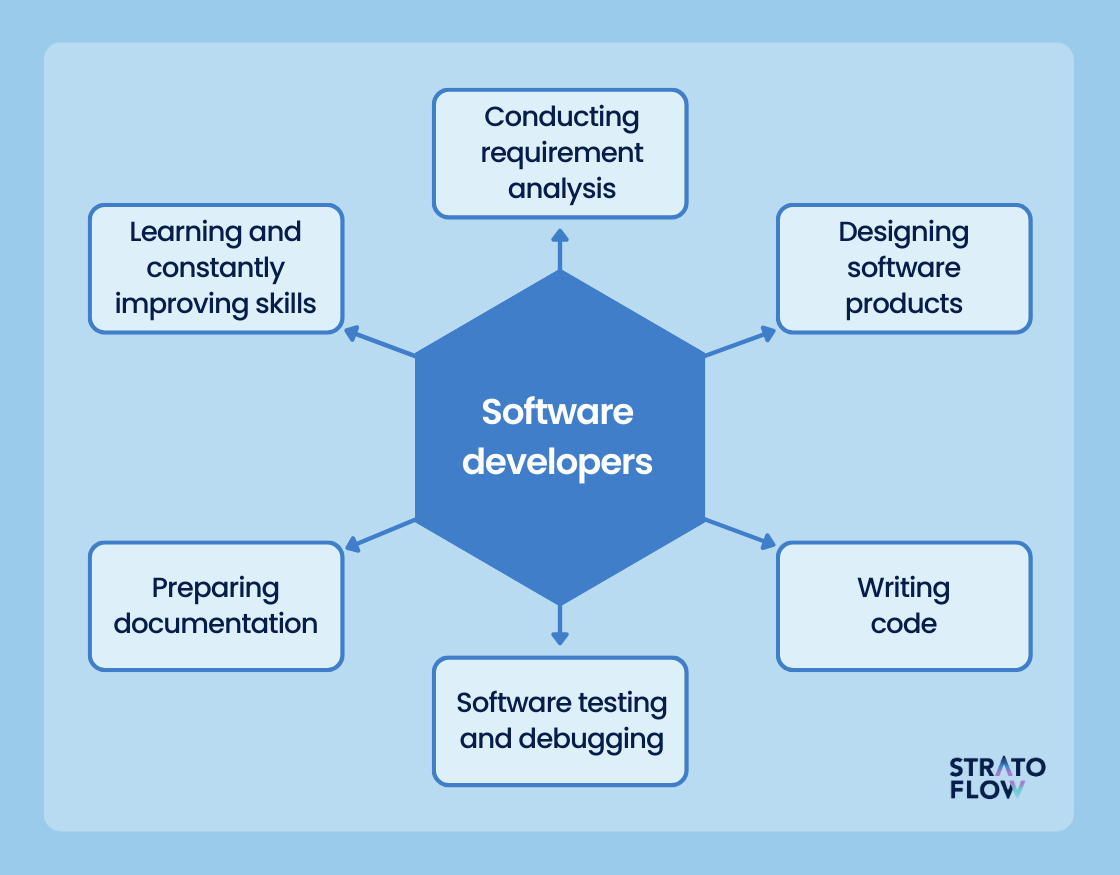Hire Dedicated Developers to Increase Your Software Development Timeline
Hire Dedicated Developers to Increase Your Software Development Timeline
Blog Article
Devoted Developers vs. In-House Teams: Which Is Right for You?
The choice between utilizing dedicated programmers and maintaining an in-house group is a significant one that can impact the trajectory of your tasks and general organization technique. Committed programmers provide a level of flexibility and specialized competence that can be useful for particular, temporary efforts. Conversely, internal teams contribute to a natural company culture and a nuanced understanding of lasting objectives. By checking out critical variables such as spending plan, job extent, and desired control, you can much better figure out which technique aligns with your organizational requirements. The implications of this choice expand past instant end results-- consider the more comprehensive effect on your organization landscape.
Recognizing Committed Designers
The expanding need for specialized abilities in the tech market has resulted in the development of devoted designers as a sensible solution for several companies. These professionals are normally acquired on a project basis, allowing firms to take advantage of details knowledge without the long-term commitment related to permanent hires. Dedicated designers are frequently embedded within a customer's group, supplying versatility and scalability to fulfill job requirements.
This design allows companies to access an international skill pool, which is especially helpful in a quickly developing technological landscape. Dedicated developers can be sourced from various geographical areas, guaranteeing that firms can locate the ideal skill established at affordable prices. They typically bring a wide range of experience and knowledge, having worked on diverse jobs throughout various sectors.
In addition, dedicated designers can focus solely on the jobs handy, improving efficiency and effectiveness. They are outfitted to incorporate perfectly right into existing process, collaborating closely with in-house teams to achieve task goals. This method not only minimizes the burden of employment and training yet additionally permits companies to continue to be agile, adapting quickly to transforming market needs and technical advancements.
Benefits of In-House Teams

Furthermore, internal groups often tend to have a much deeper understanding of the company's goal, values, and goals. This alignment can improve worker interaction and motivation, as team members feel a lot more connected to their work and the organization's success. Additionally, having a devoted in-house team permits much better placement of objectives and methods, as these members are regularly concentrated on the business's priorities.
In-house teams also facilitate quicker decision-making procedures, as they can respond extra swiftly to changes and challenges. The recognized partnerships and knowledge with firm methods allow for streamlined operations and decreased miscommunication. Eventually, the combination of a natural society, positioning with business goals, and effective interaction makes in-house teams an important asset for several companies, especially those looking to grow long-term development and development.
Cost Factors To Consider
When reviewing expense considerations, both in-house teams and devoted designers present distinct monetary ramifications for companies. Engaging specialized designers typically involves a pay-per-project or hourly rate version, which can be cost-effective for services with varying project demands. This technique enables for adaptability in scaling resources up or down, making certain that companies only pay for the solutions they need.
In contrast, in-house teams involve repaired expenses, consisting of incomes, benefits, and overhead expenses such as office and tools. While this design uses higher control and instant accessibility of resources, it might bring about greater long-lasting expenditures, specifically if the work does not justify a full time personnel.
Moreover, firms must take into consideration the covert prices linked with employment and training of internal staff members, which can even more stress budget plans. In many cases, the moment and sources invested on managing an internal you can try these out group can diminish the company's core business objectives.

Task Management and Versatility
Task monitoring and versatility are crucial factors that affect the choice between in-house teams and specialized programmers. Committed groups frequently have established procedures for taking care of tasks effectively, leveraging certain techniques like Agile or Scrum, which promote repetitive progress and flexibility.

Eventually, the option between specialized developers and internal groups rests on the preferred level of flexibility and the details task administration needs. Companies need to evaluate their functional dynamics, project intricacy, and resource availability to determine which choice straightens ideal with their calculated objectives.
Making the Right Selection
Picking the ideal advancement approach-- dedicated designers or internal groups-- calls for a mindful assessment of different elements that straighten with a business's tactical objectives. On explanation the other hand, in-house teams can give much better connection and combination with existing personnel.
Next, examine your budget plan. Dedicated programmers commonly provide an affordable remedy for temporary projects, while in-house teams may incur greater long-term expenses as a result of incomes, advantages, and expenses prices. Examine the level of control and cooperation wanted; internal teams usually foster stronger interaction and placement with business culture.
If prompt results are needed, dedicated programmers can be onboarded rapidly, whereas developing an in-house group takes time for recruitment and training. If constant advancement is crucial, investing in an internal team might generate better returns over time.
Verdict
In conclusion, the decision in between committed programmers and internal groups hinges on task requirements and organizational goals. Conversely, in-house groups grow a cohesive culture and much deeper placement with long-term objectives.
The decision in between utilizing dedicated programmers and preserving an in-house group is a considerable one that can affect the trajectory of your tasks and general organization method.Task management and adaptability are critical factors that influence the selection in between committed developers and internal groups. hire dedicated developers.In contrast, internal groups might excel in keeping a consistent project monitoring structure due to their knowledge with the organization's society and long-lasting objectives. Devoted programmers frequently provide a cost-effective remedy for short-term jobs, while internal teams might incur higher long-lasting find more info expenses due to incomes, benefits, and overhead expenses.In verdict, the decision between internal teams and dedicated developers pivots on job requirements and business goals
Report this page